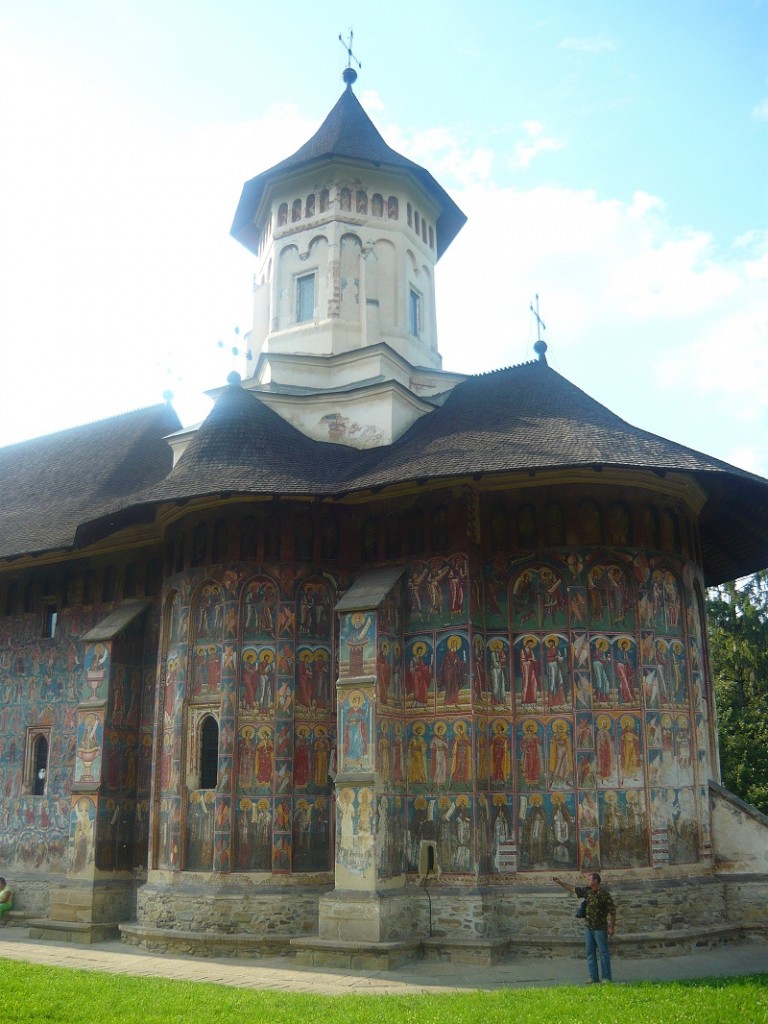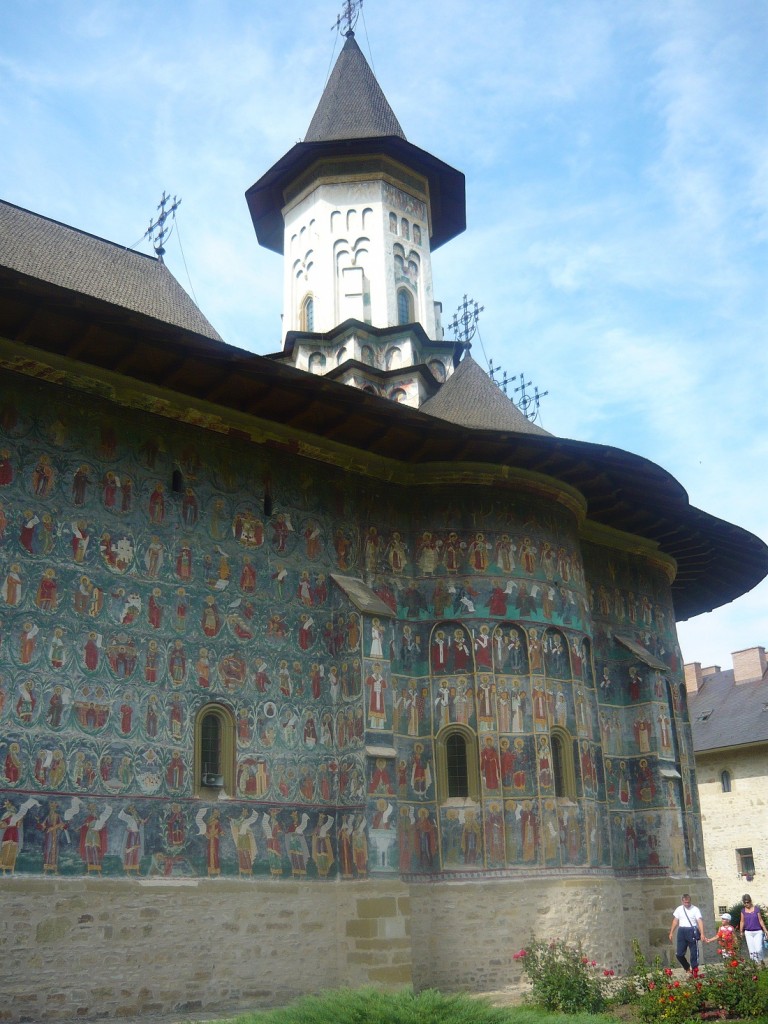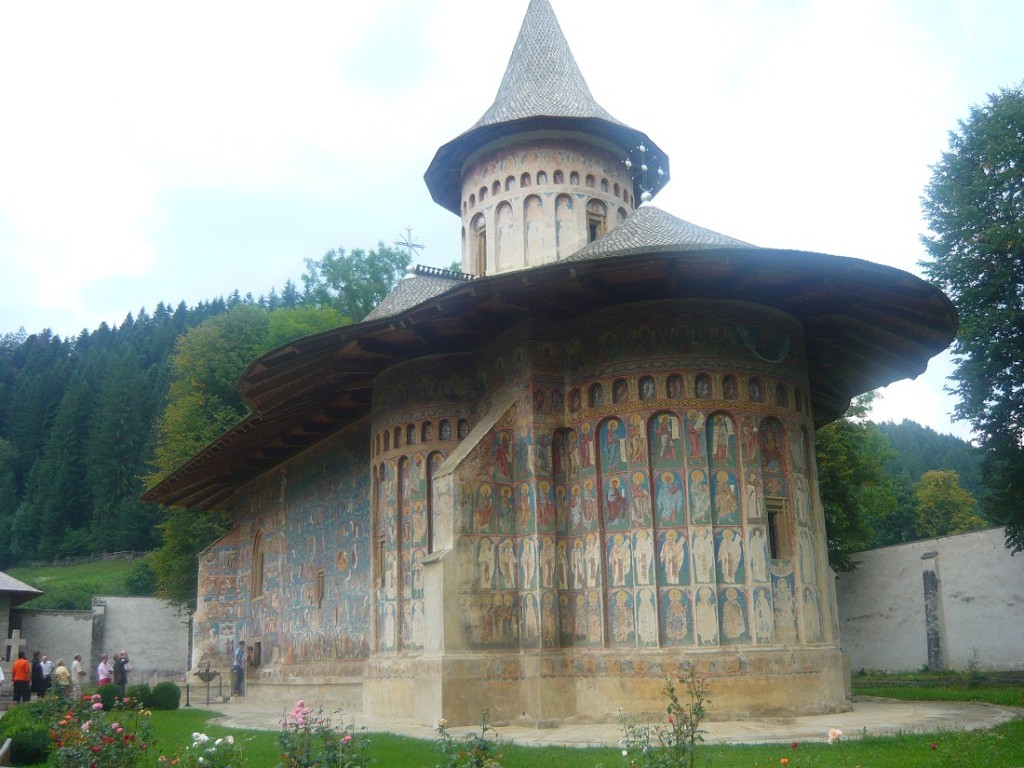UNESCO World heritage sites in Romania : More of Bucovina's painted monasteries

A trip to Bucovina – a region we wrote about here – should include the famous painted monasteries, many of which are UNESCO World Heritage sites. Guest writer Mariana Ganea presents some more of the monasteries found in Bucovina. The first part of this piece was published here.
The Moldovita monastery is situated in the village of Vatra Moldovitei , Suceava county at 15kilometers from the village of Vama and it is surrounded by the picturesque Obcinele Bucovinei. I wrote about Obcini in my first article about Bucovina area.
The Moldovita monastery was built in 1532 by the Stefan the Great’s heir Petru Rares. The Prince Petru Rares founded the Moldovita monastery as a protective barrier against the army of the Ottoman Turkish Empire.
The Moldovita monastery is one of the five monasteries in the Bucovina region that has exterior frescoes on the outer walls. The outer walls of the Moldovita monastery are known as “the holy scriptures in color”. The Moldovita frescoes were painted by a local painter named Toma of Suceava in 1537. The painter used predominantly yellows and blues and represented themes from Bible relevant to the Christian Orthodox church, such as:"The Virgin enthroned with the holy Child in her lap", ” The Tree of Jesse” and “The Siege of Constantinople” (626 after Christ). One of the most famous frescoes is “TheLlast Judgment” painted on the west wall.
Dedication day : Feast of the Annunciation – 25 March

Sucevita monastery is situated near the Sucevita river, in the village of Sucevita at 18 kilometers from the city of Raduti, Suceava county.
The Sucevita monastery was built in 1585 by the Movila brothers (a rich and famous family of boyars in the principality of Moldavia that became related through marriage with the Musatin family, the House of Moldavian Princes, they also had connections with the king’s of Poland.)
The architecture of the Sucevita monastery is a mix between the Byzantine style, with Gothic elements, and the typical painted churches of Bucovina. The interior and the exterior walls are covered by mural paintings that depict episodes from the Bible (old and new testament). The Sucevita monastery was a princely residence as well as a fortified monastery. Inside the monastery are Ierimia and Simion Movila’s tombs.
Dedication day : The Lord Ascension Easter

Voronet monastery is situated in the village of Voronet , Suceava county. Voronet monastery was built in 1488 by Stefan the Great to commemorate the victory at the battle of Vaslui against the Ottoman Turks army. The Voronet monastery is known as “the Sistine Chapel of the East”. The exterior walls, including the representation of the “Last Judgment” were painted in 1547 with a background of vivid blue, which is contrasted with the Titian red. The main church of Saint George at the Voronet monastery is possibly the most famous church in Romania, which it known throughout the world for its exterior frescoes of bright and intense colors, and for the hundreds of well-preserved figures placed against the renowned "azurite" background. The interior door frames are Gothic and on each wall is a tall window with a flamboyant Gothic arch. On the north façade's decorations include Moldavian heraldic motifs.
Dedication day: Saint George – 23 April
By Mariana Ganea, guest writer
 Mariana holds a PhD in Economics and she has been working in banking since 1991. Now, she is senior training consultant in banking and she is also freelance authorized trainer in soft skills and financial banking techniques. She studied banking techniques, communication, sales, NPL, coaching and transactional analysis. She is passionate about education, travel, history, politics, music, reading, movies, cultural events and photography.
Mariana holds a PhD in Economics and she has been working in banking since 1991. Now, she is senior training consultant in banking and she is also freelance authorized trainer in soft skills and financial banking techniques. She studied banking techniques, communication, sales, NPL, coaching and transactional analysis. She is passionate about education, travel, history, politics, music, reading, movies, cultural events and photography.
The views expressed are her own and do not necessarily reflect those of Romania Insider.com.
(photo sources: Romania-Insider.com)











